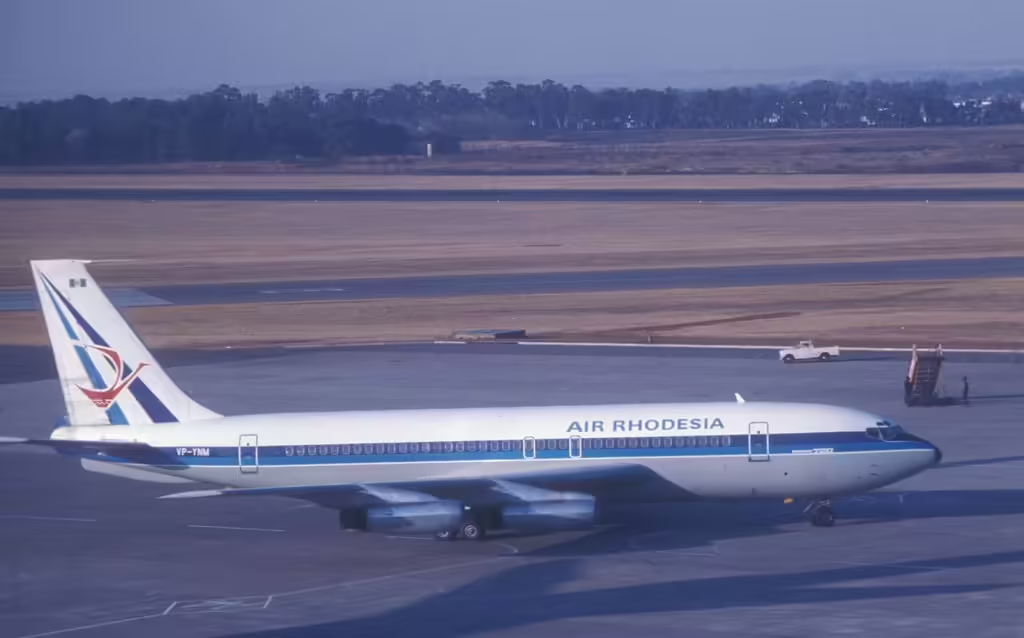
Table of Contents
In the Boeing lineup, the Boeing 720 was a bit different. Initially, it was the only deviation from Boeing’s naming scheme for the 7X7, which began with the 707 and continues today. It was more than just a 707 derivative.
A little more than 150 were built in less than ten years, before production of the 720 ended in 1967. The plane is one of Boeing’s less well-known models, although the program was profitable for the business despite relatively low sales. Let’s examine the history of the Boeing 720 in more detail.
Developing derivatives
Boeing 707 was the plane that revolutionized aviation. It was developed from the Dash 80 prototype and created competition for the DC-8, paving the way for jet airliner travel. Although sales were slow, the 707 became the largest form of transportation in just two years after its introduction.
In an effort to increase orders, Boeing attempted to create customized versions of the 707 for various clients. For Braniff, Boeing, for example, produced the 707-220, a version intended for high-temperature operations in South America. BOAC and Lufthansa chose the Rolls-Royce-powered 707-420, while Qantas chose the long-range 707-300.
Boeing unveiled a version in July 1957, intended to fill the gap left by United Airlines. Designed to operate short routes from short runways, the 707-020 will be a small aircraft. Boeing chose to brand the 720 based on feedback from launch customer United Airlines. The Boeing 720 was primarily intended to serve as a stand-in for the Boeing 707 and 727.
As Boeing states,
“After modification for use on short runways and short- to medium-range routes, the 707 was designated the 720. The front flaps were modified, the fuselage length was reduced by nine feet (2.7 m), and finally turbofan engines were added. 1959 and 1967 Meanwhile, Boeing produced 154 720s.
A very different plane
According to Boeing, the 720 looked very similar to the 707 but was an entirely different animal underneath. Its lighter frame and significantly reduced fuel load reduced its overall weight, allowing better performance during takeoff and maximum speed. than 707.
Additional changes include a better wing with less drag and more sweep. On both sides, the rearmost overwing emergency exit was removed, although high density aircraft still had the option of two overwing exits.
Four JT3C turbojets produced by Pratt & Whitney first used the 720. It produced 12,500 pounds of thrust, allowing the aircraft to reach 2,800 NM (5,200 km) while carrying 131 people in two classes.
However, the more popular engine option was the JT3D turbofan, which delivered 18,000 pounds of thrust. This gave the 720 the ability to fly 156 passengers to a range of 3,200 NM (5,900 km). Aircraft with the turbofan option were designated the 720B.
A rare bird
On July 5, 1960, United Airlines began operating the 720. That same July 31, American Airlines joined in with 720s of their own. American Airlines operated the first turbofan 720B in March 1961. These were Northwest Airlines, Western Airlines, Eastern Air Lines and Lufthansa. Among other notable operators.
The first 720s built, dubbed “The Starship”, were used as private charter aircraft in the 1970s by rock artists such as Led Zeppelin. In 1984, as part of an FAA and NASA test experiment, a 720 was remotely controlled and intentionally crashed.
By far the most common model was the 720B, which was powered by a turbofan. Boeing sold 65 of the 720 turbojet-powered aircraft and 89 702Bs. However, in 1960, only four years after the type was launched, Boeing cannibalized the future of this plane with the introduction of a direct competitor, the 727.
The Boeing 720 today
The last 720 was operated by Pratt & Whitney on September 29, 2010, the last day of service. The 720 airframe, which is currently on display at Canada’s National Air Force Museum, was used by the enginemaker as a testbed.
Even though the aircraft has been out of service for over ten years, there are still some fascinating stories involving the vintage 720.
One such story is the abandoned 720 that was left at Nagpur Airport in 1991. The defunct aircraft would remain there for 24 years before the airport’s owner decided to scrap it in 2015.


1 thought on “History of the Boeing 720”